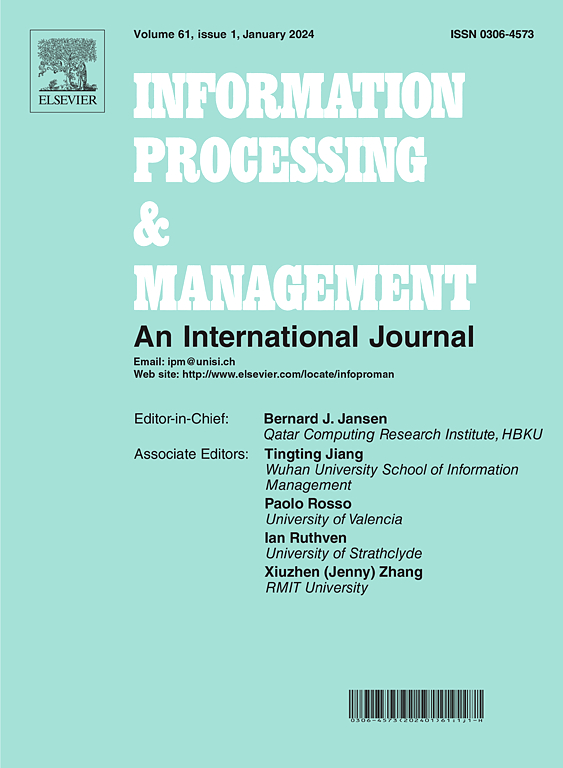跨级别交互的图相似性学习
IF 7.4
1区 管理学
Q1 COMPUTER SCIENCE, INFORMATION SYSTEMS
引用次数: 0
摘要
图相似性计算在生物信息学等领域至关重要,例如,通过比较分子结构相似性来识别具有相似生物活性的化合物。图编辑距离(GED)和最大公共子图等传统方法存在计算复杂度高、对噪声敏感等问题,限制了它们的实际应用。现有的深度学习方法难以提取图特征,全面影响了计算精度。针对这些问题,我们提出了一种新方法--CLSim,它通过加强特征提取和改进图相似性计算来提高性能。利用注意力机制,CLSim 首先将图对特征对齐到共享空间,并将节点特征聚合为全局嵌入。在提取图层特征时,会考虑嵌入向量的方向性,以处理更复杂的数据。此外,我们还开发了跨层特征提取技术,将节点级信息与图级嵌入相结合,以捕捉详细的节点-图交互细节。在三个数据集上的实验结果表明,与 GED 方法和图神经网络基线相比,CLSim 具有出色的泛化能力和更低的错误率。在最坏的情况下,其时间复杂度仍为二次方。示例查询结果进一步验证了该模型的有效性,为图形相似性任务提供了更高效、更准确的解决方案。本文章由计算机程序翻译,如有差异,请以英文原文为准。
Graph similarity learning for cross-level interactions
Graph similarity computation is crucial in fields such as bioinformatics, e.g., identifying compounds with similar biological activities by comparing molecular structural similarities. Traditional methods such as graph edit distance (GED) and maximal common subgraphs suffer from high computational complexity and sensitivity to noise, which limit their practical applications. Existing deep learning methods make it difficult to extract graph features, which affects computational accuracy comprehensively. To address these problems, we propose a new method, CLSim, which improves performance by enhancing feature extraction and improving graph similarity computation. Using the attention mechanism, CLSim first aligns graph pair features to the shared space and aggregates node features into global embeddings. The directionality of the embedding vectors is considered when extracting graph-level features to handle more complex data. In addition, we develop cross-layer feature extraction techniques that combine node-level information with graph-level embeddings to capture detailed node-graph interaction details. Experimental results on three datasets show that CLSim has excellent generalization capabilities and achieves lower error rates compared to the GED approach and the graph neural network baseline. In the worst case, its time complexity remains quadratic. Example query results further validate the effectiveness of the model, providing a more efficient and accurate solutions for graph similarity tasks.
求助全文
通过发布文献求助,成功后即可免费获取论文全文。
去求助
来源期刊

Information Processing & Management
工程技术-计算机:信息系统
CiteScore
17.00
自引率
11.60%
发文量
276
审稿时长
39 days
期刊介绍:
Information Processing and Management is dedicated to publishing cutting-edge original research at the convergence of computing and information science. Our scope encompasses theory, methods, and applications across various domains, including advertising, business, health, information science, information technology marketing, and social computing.
We aim to cater to the interests of both primary researchers and practitioners by offering an effective platform for the timely dissemination of advanced and topical issues in this interdisciplinary field. The journal places particular emphasis on original research articles, research survey articles, research method articles, and articles addressing critical applications of research. Join us in advancing knowledge and innovation at the intersection of computing and information science.
 求助内容:
求助内容: 应助结果提醒方式:
应助结果提醒方式:


